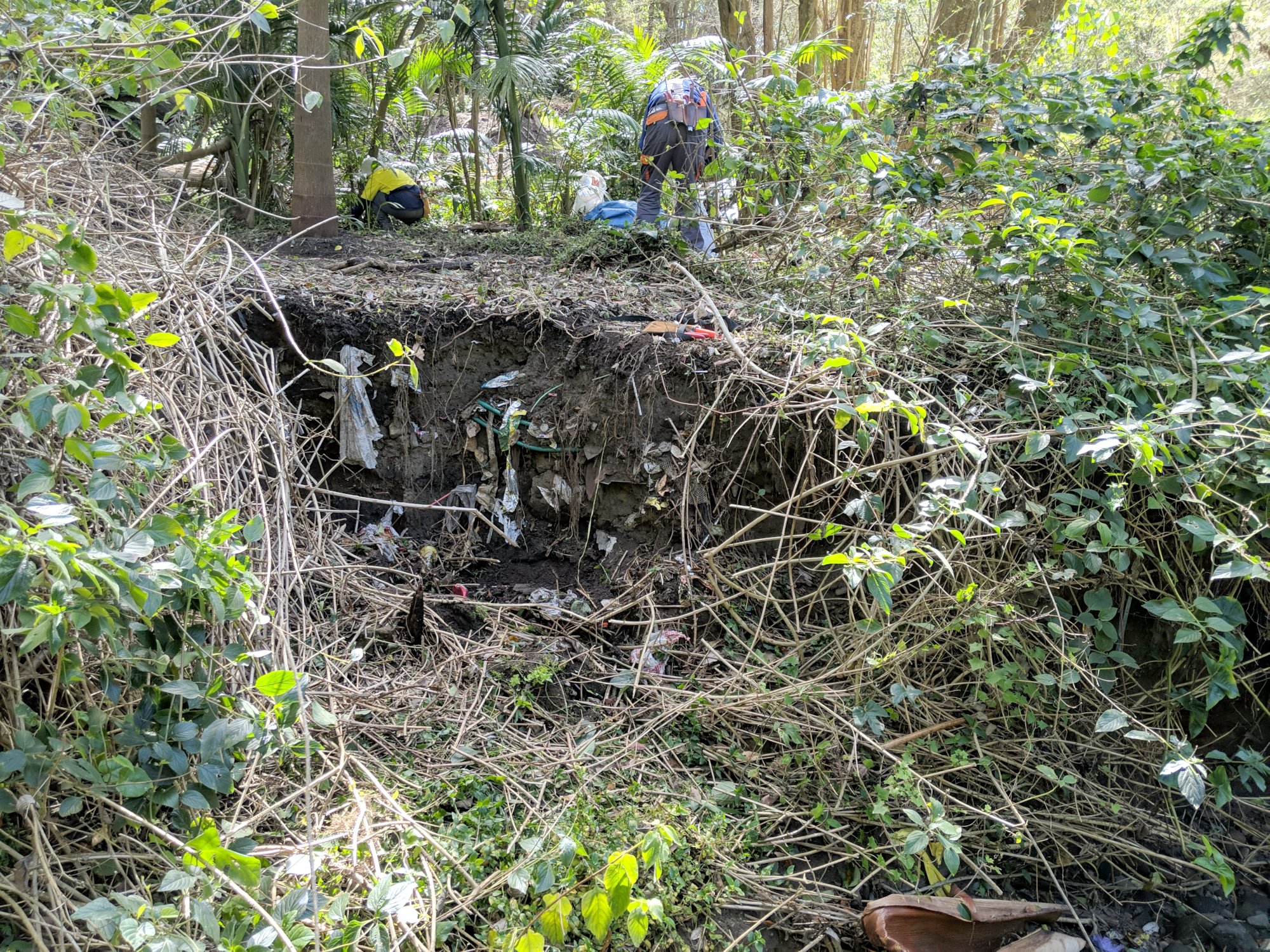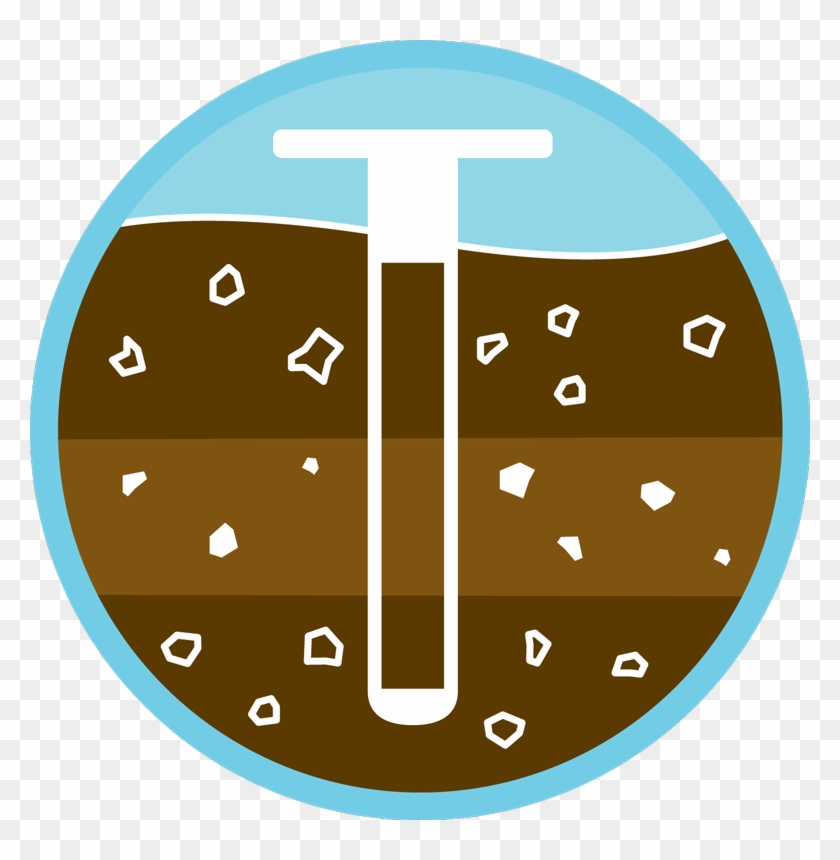Not sure if this is something the community here has interest in.
A section of the creek bank has fallen away, revealing that all of the soil has been recently deposited (~ last few decades). The garbage inclusion likely spreads for dozens or maybe hundreds of cubic meters of earth. We don’t want to disturb the soil to clean this out so we’re limited to surface level cleaning.
On the flipside: it’s lots of deep fertile topsoil. The fast growing weeds, like lantana, absolutely love it.



Wow. Gnarly!
Take a look at a grizzly screen. They use them in mining. Basically it’s just a crude sieve that screens out rocks and cobbles. Heck, a bobcat mounted rock picker might do a food job at sifting the shit out if you are interested in doing a deeper clean. Unlikely though since you have a somewhat stable bank.
You could also consider treating it like a landfill and capping it, but again your veg would be starting from zero.
Cool share!
grizzly screen
There are no stones in this deposited soil so it would probably work quite well. As a bonus it would filter out some of the weeds like madeira vine.
Disturbing the topsoil that much isn’t something my group has done before and we might not be allowed (national parks land). Ideally a stormwater trap/filter should be planned in parallel with soil rectification (as they might step on each others toes, esp if large and built of concrete).
Normally the soil we work with has a mixture of weed seeds and native seeds in it, so with repeated weeding it recovers quickly. This particular soil didn’t seem to have anything native growing in it (which probably makes sense given that it’s urban runoff), which if confirmed might affect treatment options (eg maybe take topsoil offsite for disposal?).
You could also consider treating it like a landfill and capping it
This photo is about 2m from creek water (almost where my feet are), so I think capping would just wash away during storms. You would probably move it somewhere else first then cap it? Outside my pay grade, I’m just a volunteer :)

If it’s a national park, you’re hands are tied, most likely. That said, your group (assuming it’s some NGO/Land Conservation) could approach them and express interest in cleaning it up, or at least push them to clean it up.
You’re right. you need a trap to stop further deposition.
While it’s urban sediment, it’s probably relatively clean. I reported on a similar project, where they had an old landfill that operated for a few years in the 60s. it was right up against a major creek, and being undermined, with the shit washing into the river during flood events. There were some contaminants, but over all it wasn’t an ecological disaster (yet). The bank stabilization was tough, but ultimately, they rock armoured it using 60 cm+ sized boulders to stop the erosion. They were then going to cap it to the landfill standards (60 cm of clean clay) and build a soil profile over top of it.
Reclamation is tough, and it’s heart-breaking sometimes, when you see how shitty some of the sites are. I used to do a lot of per-distubance soil survey work, and was essentially the harbinger of destruction for the beautiful ecosystems I worked in. Now I get to figure out how to fix shitty disturbed sites. Sits a little better with me.
The waterways & stormwater outlets are more complex in terms of ownership than it just all being national parks, the local councils (third tier of Australian government, below federal & state) and Sydney water are also involved. I believe the creek water is managed by one authority and the creek bed a different authority, just to make things more fun.
While it’s urban sediment, it’s probably relatively clean.
What do you mean by clean? Little in the way of soluble pollutants and insoluble liquid pollutants? ie the pollution is mainly just chemically stable solid materials?
but ultimately, they rock armoured it using 60 cm+ sized boulders to stop the erosion
Upstream of this at the outlet there was big rockwork installed years ago, much of which is bigger than 60cm, but a lot of it has still washed around and collapsed. I’ll see if I can grab some pictures next time I’m there.
Reclamation is tough, and it’s heart-breaking sometimes,
We only focus on some very small patches of a very large regional park. More than half of it (by my estimates) is taken over by vine weeds (mostly balloon vine, morning glory & madeira) that smother the native trees – if you blur your vision then it looks like verdant green rolling hills. Small native plants only survive in some sections, others are completely overtaken by tradescantia (wandering jew) and lantana.
Occasionally some commercial bushcare contractors come through to work sections, but again only small (and more accessible) areas. The national park is also a rail corridor and no-one is allowed near that without lots of prep + supervision (+ money to pay for supervision), so those bits are generally bad.
Now I get to figure out how to fix shitty disturbed sites. Sits a little better with me.
Glad you’ve found some power over the chaos. Hope it’s not too heart wrenching.

Yay. A bureaucratic nightmare!
What do you mean by clean?
As in likely below environmental guidelines for contaminants of concern (metals, hydrocarbons, organic compounds). And by relatively they are probably circum-threshold values. If I were to go to sample it I would expect a lot of variability.
I can’t imagine the invasive plants issues you guys have down there.
More info that I can ramble on about:
- Predominantly sandstone area, so this depth of soil is only seen in the lowest areas of valleys. Otherwise the soil depths is typically 30cm or so.
- Sewage infrastructure follows the creek, so where it overflows you see plants like tomatoes popping up.
- Creek width and bigger floodplains developing in nearby bushland over the past 100 years (likely due to soil drainage lowering in surrounding areas).
- Much of the creek is hand-paddle-boating only (no powered propulsion) because of fears of churning up the sediment from prior decades of polluting industry.

